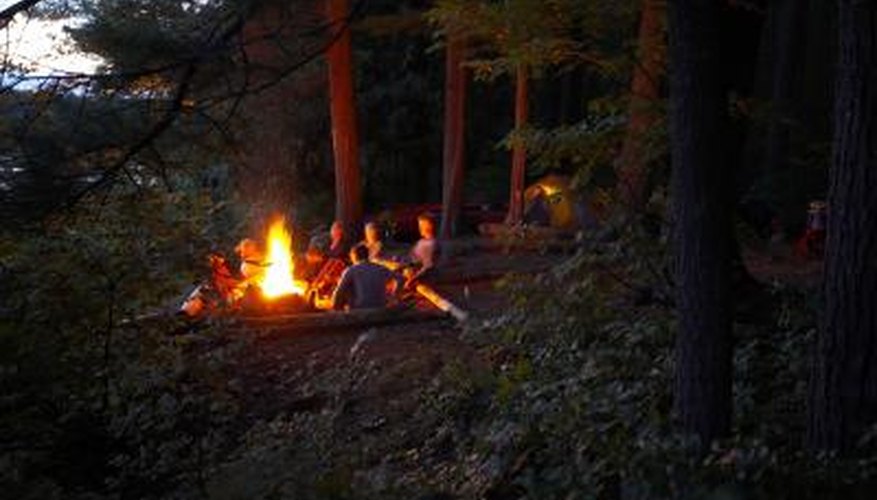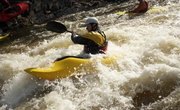
The Boy Scouts of America have developed campfire programs that encourage fellowship and camaraderie among members through fun, participation, recognition and inspiration. Conducting a meaningful campfire requires planning and is an activity that always '"follows the fire," meaning its mood transitions according to the action of the flames. Campfires run from lively as the flames ignite and burn brightly to quiet as its crackling embers die out.
Step 1
Decide what type of theme the program will have and how to incorporate the Four S's of campfires, which are songs, stories, skits and showmanship. Popular campfire programs include Storytelling Campfires where a variety of tales are shared; Mystery Campfires where the night is filled with surprises; Educational Campfires that present a guest speaker; Court-of-Honor Campfires that recognize achievements; Stunt Campfires that feature games and competition; and Inspirational Campfires with a spiritual or patriotic focus. It is common for several program themes to be combined at a single campfire.
Step 2
Build a hearty fire using the log-cabin method, which produces uniform heat and long-lasting light. Make the base using rows of logs or other wood and pile on tinder and kindling, such as dry leaves, pine needles or thin branches. Stack layers of wood in alternating directions on top of the base and form four walls around the tinder and kindling. Refrain from changing the pace of the program by adding wood after the campfire begins. Allow the campfire to burn through its natural progression and influence the tone of the program.
Step 3
Open the program with an informal, formal or ceremonial presentation. Gather participants around the fire and hold a roll call, if the opening is informal. Include activity reports from group leaders to add formality. Offer a ritual that involves all members when choosing a ceremonial opening. The most commonly practiced type of opening, the ceremonial, might acknowledge someone advancing to a higher scouting rank, be a special ritual about friendship, or honor a tradition or anniversary of the organization.
Step 4
Sing fast, lively, action songs while the flames are strong and bright. Choose medium-paced songs during the main part of the program when the fire has calmed down. Save slow-tempo, sentimental songs and two- or three-part rounds for when the fire is fading. Harmonica or guitar accompaniment makes them extra special.
Step 5
Present stunts when the fire burns at a steady and medium pace. Stunts are often skits, which may be humorous and entertaining, serious and educational, or a combination of both. Include props and costumes for greater effect. Other stunts include musical performances, demonstrations such as first-aid procedures, physical activities like tug-of-war, and competitions in knot tying and other scouting skills.
Step 6
Spin a yarn, or tell a campfire story that is funny, inspiring or historical when the flames are small and mellow. Avoid ghost and gore stories that might scare people, especially younger campers. Keep stories short and to the point, as well as clean-cut and reflecting high morals.
Step 7
Close the program when the fire is diminished to a patch of glowing embers. Offer a quiet activity such as a prayer, meditation, reading or poem, then bid everyone good night.
References
Writer Bio
Donna G. Morton lives in Atlanta and has been writing for more than 27 years. She earned a Bachelor of Science in journalism from East Tennessee State University and spent 15 years in radio and corporate advertising, winning 10 Excellence in Advertising Awards for creative writing.



